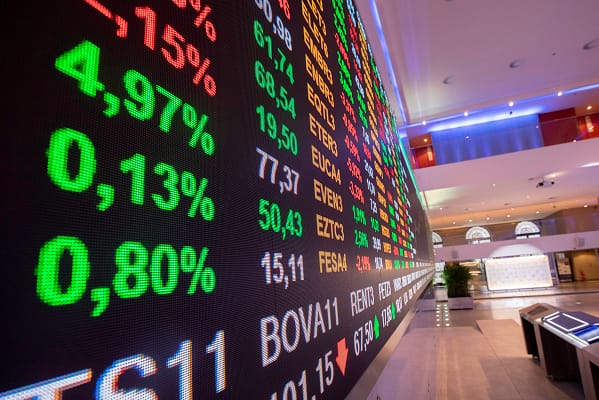The pound sterling against the US dollar (GBP/USD) continued its negative performance today, reaching its lowest levels since mid-June, at the level of 1.25285 at around 8:00 am GMT.
While the weakness in the pound was not due to the strength of the dollar, we have seen it decline against a basket of major currencies as well.
Also at the same time, the pound sterling recorded its lowest level against the euro, with the euro against the pound (EUR/GBP) reaching its highest levels since last Thursday, at 0.85769, while the pound was able later during the day to recover some of its gains, with it reaching the level of 0.85553, near 10 am. Besides, the British Pound Sterling Currency Index (BXY) continues to trade near its lowest levels since a week, near the level of 125.85 points.
This weakness in the Sterling today came with more negative data coming out of China. Today, we witnessed the services PMI figures for the month of August, as we saw the slowest pace of growth in service activities in China since December last year, with a reading of 51.8, which was below expectations of 53.6.
While the services sector figures came after the manufacturing PMI numbers we saw last week, which came at the highest levels since last February and outperformed expectations that were predicting a continued contraction in manufacturing activities.
In the UK, today we saw a less than expected contraction in services activities with the S&P Global Services PMI reading at 49.5 vs. 48.7 expected. This figure followed the manufacturing PMI we saw on Friday which pointed to a further contraction in manufacturing activities to the lowest levels since May of 2020.
In the bond markets, UK gilt yields continue to rise. At today’s highs, the two-year gilts yield recorded a level of 5.241%, the highest since last Thursday, and is just around the corner from the highest levels since last July at 5.322%. British 10-year gilt yields continue to recover today, reaching 4.500%, the highest in nearly ten days. Also, the gap between long-term and short-term gilts continues to narrow for the sixth day in a row, reaching -0.7330%, but it’s still just off the highest levels since 2004 at -1.117%.
While the rise in yields comes amid a general decline in the British gilt markets. The iShares Core UK Gilts UCITS ETF (IGLT), which tracks the performance of British government gilts, fell to its lowest level in about ten days, amid a decline in trading volumes during the past week to the lowest levels since last May.
I believe that the economic data and the performance of the gilt markets reflect further declining sentiment towards the UK economy.
Despite the decline in economic activity, we still see more expectations about the possibility of the Bank of England raising interest rates at least once this year to combat high inflation, which may put more pressure on the British economy.
This was actually reflected in the divergent performance in long- and short-term gilt yields, with the sudden widening of the gap, which came with the decline in ten-year gilt yields, reflecting the weak expectations about the future growth of the British economy in light of the continuous rise in interest rates, which were priced through the rise in two-years gilt yields.
While this weakness of the pound sterling coincides with the strength shown by the US dollar, with market expectations to keep interest rates at the current high levels for a longer period than expected, in light of the inflation figures that we witnessed last week, in order for the US dollar to strengthen its position as a safe haven in light of the decline in the global economy whether in China, Europe and the United Kingdom.
Technical outlook for the GBP/USD
On the technical side, and on the two-hour time frame, the GBP/USD broke the support floor between 014884-1.25537 levels. On the other hand, failure to recover the previous support area may keep the sellers’ attention on more low levels that we haven’t seen since mid-June, at 1.24927, followed by the next support levels at 1.24059-1.23761, with a succession of bearish breaches.
On the other hand, restoring the previous support area may stop the prevailing bearish trend and may turn attention back towards the next resistance area at 1.26264-1.26428, which may be followed by 1.26929 and the higher resistance area at 1.27235-1.27465, with a succession of upward breaches with the restoration of the simple moving average. To close 200 candles.





Leave a Comment